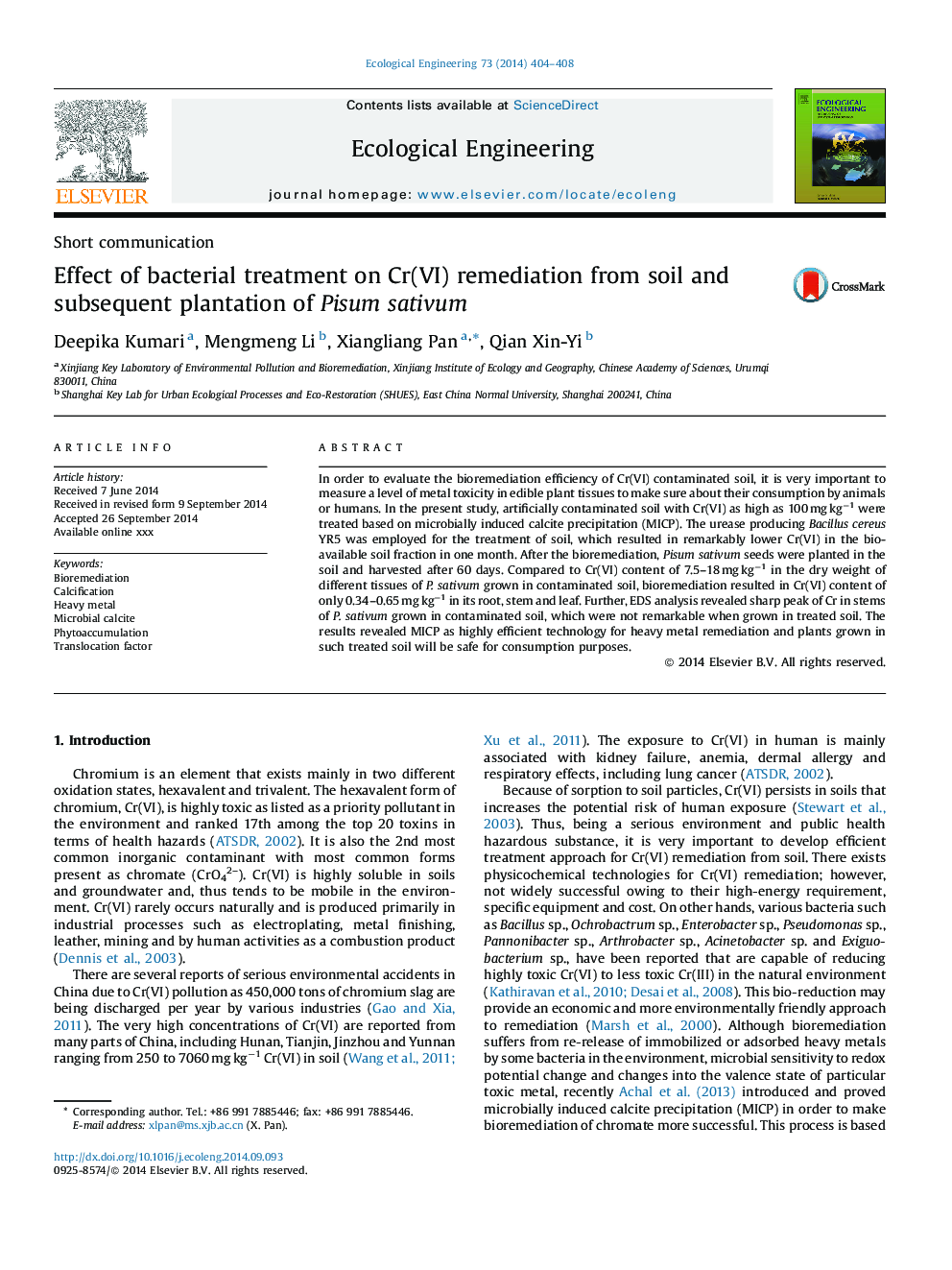| Article ID | Journal | Published Year | Pages | File Type |
|---|---|---|---|---|
| 6301960 | Ecological Engineering | 2014 | 5 Pages |
Abstract
In order to evaluate the bioremediation efficiency of Cr(VI) contaminated soil, it is very important to measure a level of metal toxicity in edible plant tissues to make sure about their consumption by animals or humans. In the present study, artificially contaminated soil with Cr(VI) as high as 100 mg kgâ1 were treated based on microbially induced calcite precipitation (MICP). The urease producing Bacillus cereus YR5 was employed for the treatment of soil, which resulted in remarkably lower Cr(VI) in the bio-available soil fraction in one month. After the bioremediation, Pisum sativum seeds were planted in the soil and harvested after 60 days. Compared to Cr(VI) content of 7.5-18 mg kgâ1 in the dry weight of different tissues of P. sativum grown in contaminated soil, bioremediation resulted in Cr(VI) content of only 0.34-0.65 mg kgâ1 in its root, stem and leaf. Further, EDS analysis revealed sharp peak of Cr in stems of P. sativum grown in contaminated soil, which were not remarkable when grown in treated soil. The results revealed MICP as highly efficient technology for heavy metal remediation and plants grown in such treated soil will be safe for consumption purposes.
Keywords
Related Topics
Life Sciences
Agricultural and Biological Sciences
Ecology, Evolution, Behavior and Systematics
Authors
Deepika Kumari, Mengmeng Li, Xiangliang Pan, Qian Xin-Yi,
